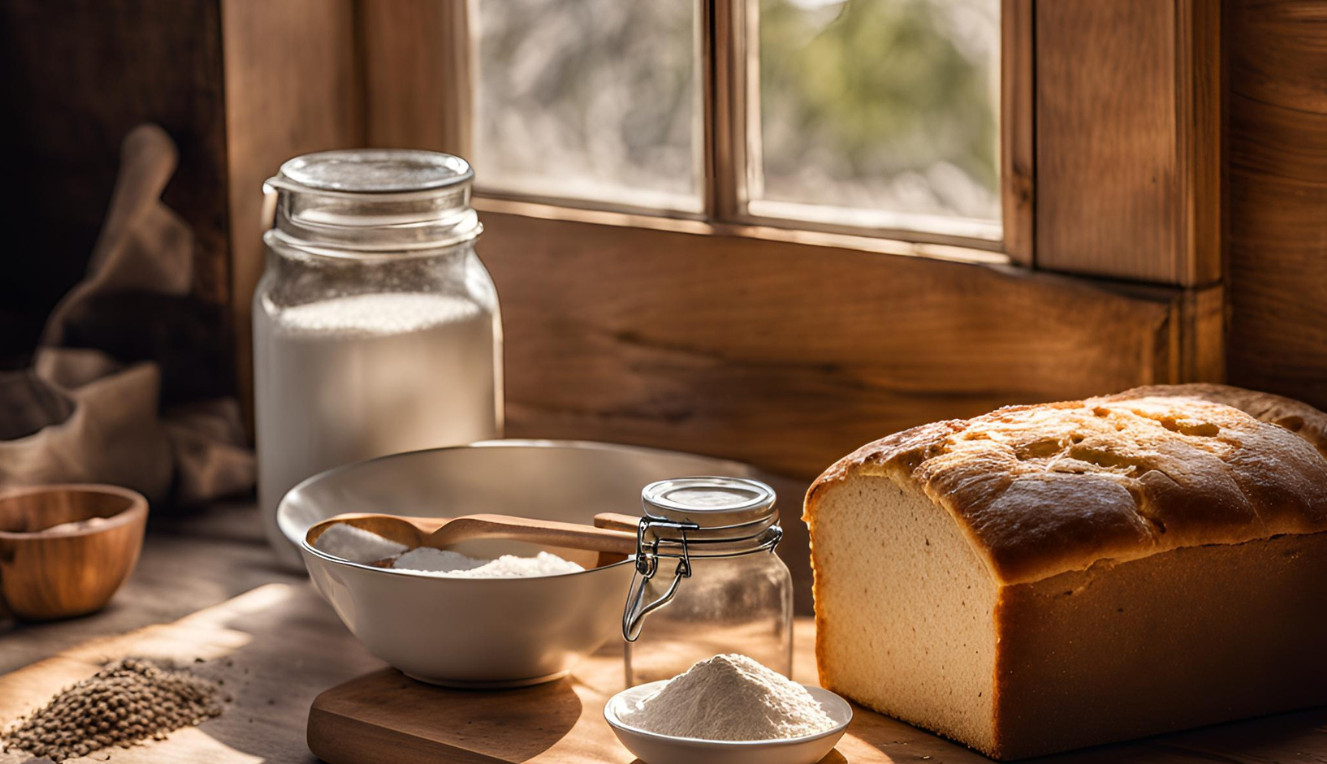Baking soda and baking powder are indispensable tools in the baker’s arsenal, both classified as chemical leaveners. These agents work by releasing carbon dioxide gas into batters and doughs, which causes them to expand and rise. While they serve a similar purpose, understanding their differences and how they function can take your baking to the next level.
what is baking soda
Baking soda, also known as sodium bicarbonate or bicarbonate of soda, is a base that requires an acid to activate. When combined with both an acidic ingredient and a liquid, it undergoes a chemical reaction that releases carbon dioxide gas. This reaction creates bubbles in the batter or dough, causing it to expand and rise.
buttermilk
- yogurt
- vinegar
- citrus juice
- molasses
- natural cocoa (not Dutch-processed)
common acids used with baking soda
In addition to its leavening role, baking soda also promotes browning in baked goods, making it a popular choice for cookies and other treats that benefit from a golden, caramelized finish.
key tips for using baking soda
what is baking powder
Baking powder is a complete leavening system that contains baking soda, a dry acid (usually cream of tartar), and cornstarch. The cornstarch acts as a buffer to prevent the acid and base from reacting prematurely during storage. Baking powder is most often used in recipes without acidic ingredients, as it provides both the acid and the base required for leavening.
single acting vs. double acting baking powder
Most baking powders available to consumers today are double-acting, meaning that they activate in two stages:
key tips for using baking powder
when to use baking soda vs. baking powder
The choice between baking soda and baking powder depends on the ingredients in your recipe.
how these leaveners work in baking
The magic of these chemical leaveners lies in their ability to produce carbon dioxide gas. When baking soda or baking powder reacts with other ingredients, the gas expands within the matrix of the batter or dough, creating air pockets that cause the mixture to rise.
Heat further intensifies this process: as the batter or dough warms int he oven, proteins such as gluten (in flour) or eggs coagulate, setting the structure of the baked goods. This ensures they hold their shape after cooling.
practical substitutions
Understanding how to substitute between these two leaveners can save your recipe in a pinch.
other notes about baking soda and baking powder
conclusion
Baking soda and baking powder might seem like simple pantry staples, but their roles in baking are anything but basic. By understanding how these chemical leaveners work and when to use each, you can unlock new levels of precision and creativity in your baked goods. Whether it’s the perfect rise in a cake or just the right amount of browning for cookies, these leaveners are the unsung heroes behind your favorite treats.

biological leaveners
Natural leaveners, also known as biological leaveners, rely on living organisms to produce carbon dioxide gas, which causes batters and doughs to rise. These leaveners play a key role in creating the airy texture, lift, and structure of many beloved baked goods, from crusty artisan bread to fluffy pastries.
what are natural leaveners?
Unlike chemical leaveners, natural leaveners rely on fermentation, a biological process where living organisms consume sugars and starches in dough or batter and release carbon dioxide as a byproduct. This gas forms bubbles within the dough, creating the light and airy textures associated with many baked goods. The most common natural leavener is yeast, a single-celled fungus.
types of yeast used in baking
active dry yeast
Active dry yeast is the most widely used biological leavening agent in home baking. It comes in granulated form and requires activation, or “proofing,” in warm water before use. This step ensures the yeast is alive and ready to begin fermentation.
instant dry yeast
Instant dry yeast, sometimes labeled as “bread machine yeast,” is finer in texture and does not require proofing. It can be mixed directly into dry ingredients, making it a convenient option for many bakers.
- How to use: Mix directly into the dry ingredients; adjust quantities, as it’s more concentrated than active dry yeast. Use about 1/3 to 1/2 less instant yeast than active dry yeast.
- Common uses: Bread, pastries, and quick yeast recipes.
fresh yeast (cake yeast)
Fresh yeast, also known as cake yeast, is a moist, perishable form of yeast that comes in blocks. It is often used in professional bakeries due to its reliability and quick fermentation process.
- How to use: Crumble into dry ingredients or dissolve in water before mixing. Typically used at a higher ratio than dry yeasts.
- Common uses: Artisan breads, European-style pastries, and sweet doughs.
fermented dough starters
sourdough starter
A sourdough starter is a live culture of wild yeast and bacteria cultivated from a mixture of flour and water. The wild yeast ferments the sugars in the flour, producing carbon dioxide for leavening, while the bacteria contribute tangy, complex flavors.
- How to Use: Feed the starter regularly with fresh flour and water to keep it active. Use a portion of the starter to leaven dough.
- Common Uses: Sourdough bread, pancakes, waffles, and more.
other fermented starters
- Poolish and biga: Pre-ferments used in European baking to enhance flavor and structure in bread.
- Levain: a sourdough offshoot used in French baking
dairy based leaveners
Certain fermented dairy products can also act as leaveners, thanks to the natural acids they contain. When combined with baking soda, these ingredients create carbon dioxide gas for lift.
yogurt
- Adds moisture and a subtle tang to baked goods.
- Common in quick breads, muffins, and cakes.
buttermilk
- Provides acidity to react with baking soda for leavening.
- Frequently used in biscuits, pancakes, and cornbread.
beer and other fermented beverages
Beer and similar beverages can serve as both a flavor enhancer and a leavening agent. The carbonation and fermentation contribute to lift in recipes like beer bread and batters.
- How to Use: Substitute part of the liquid in a recipe with beer.
- Common Uses: Beer bread, fritter batters, and cakes.
how natural leaveners improve baked goods
In addition to creating lift, natural leaveners improve the texture and appearance of baked goods. The carbon dioxide gas they produce forms air pockets within the dough, resulting in a tender crumb and light texture. Fermentation also enhances flavor, adding complexity and depth to breads and pastries.
conclusion
Natural leaveners bring more than just lift to your baked goods—they add character, flavor, and texture that chemical leaveners can’t replicate. Whether you’re experimenting with a sourdough starter or perfecting a classic bread recipe, understanding these biological agents will elevate your baking to new heights.


Leave a Reply